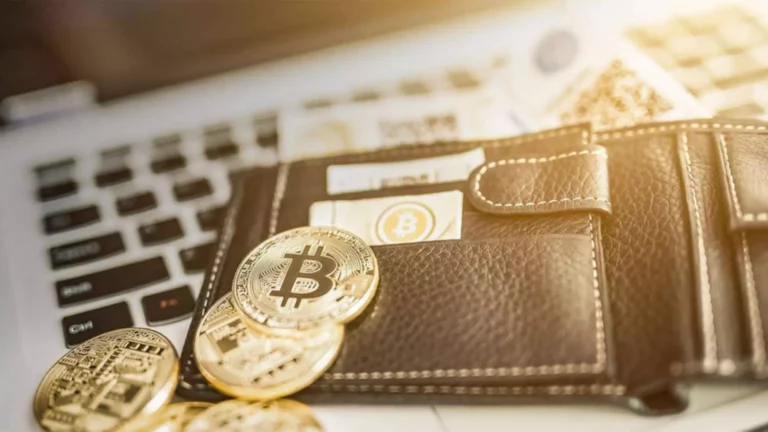“As a new era of merchants and traders emerges, we now have seen an astronomical enhance in curiosity in cryptocurrencies and digital property at large”, stated Trifonov. Brokers could be defined as people or firms that symbolize traders in shopping for and promoting property. They can either be market makers, create a marketplace for specific belongings or have direct access to liquidity suppliers like banks and financial firms. On the other hand, brokers do not provide liquidity themselves, however quite bridge traders with liquidity providers and facilitate trade execution. This collaboration between liquidity suppliers and brokers helps to make sure a liquid and environment friendly FX marketplace for traders.
What’s Subsequent For Liquidity Providers?
- These suppliers are available in varied types, together with hedge funds, central banks, and prime brokers, all contributing to liquidity provision in their own distinctive methods.
- Brokers and liquidity providers are very important elements within the fashionable funding panorama, each serving to to provide unprecedented levels of comfort and effectivity to merchants on a global scale.
- The company’s flexible pricing approach allows us to manage costs with greater effectivity.
- The commonest is impermanent loss, which happens when token costs shift, decreasing the worth of your deposit compared to simply holding the assets.
A broker is an intermediary that connects traders to the monetary markets, while a liquidity supplier is an organization or establishment that supplies the property and liquidity for trading. Top-tier LPs present flexibility in threat administration, allowing brokers to choose between full hedging, partial hedging or a hybrid B-Book strategy based mostly on market situations and publicity. Moreover, main LPs mixture liquidity from multiple sources, mitigating single-point liquidity dangers and ensuring stability even if one supplier experiences disruptions.
They keep vast buying and selling volumes and supply competitive bid and ask prices, creating a robust trading surroundings for brokers and their shoppers. The technology enables brokers to entry multiple liquidity pools simultaneously, ensuring competitive pricing and sooner execution. By routing orders to totally different liquidity suppliers, brokers can even aggregate liquidity from various sources, providing merchants with a deeper and extra various pool of potential counterparties.
Maintaining up with altering laws could be challenging and resource-intensive. Throughout such durations, liquidity suppliers might widen spreads or limit their quotes, affecting trade execution. Carefully evaluating spreads provided by LPs is necessary for brokers to determine if they are honest and aggressive. Additionally, assessing execution quality, corresponding to speed and reliability, is essential in making informed decisions about which liquidity provision firm to partner with. When selecting a liquidity provider, brokers must fastidiously contemplate components corresponding to reputation, liquidity depth, pricing, instrument range, and risk management capabilities.
Moreover, liquidity providers assist brokers in managing their danger publicity, as they will rapidly and efficiently hedge positions when required. Brokers additionally play an important white label role in guaranteeing liquidity within the monetary markets. They act as market-makers, providing steady quotes for buy and sell orders, thereby facilitating the sleek circulate of transactions.
If there’s excessive demand to borrow an asset, interest rates enhance, encouraging more deposits. They provide a decentralized alternative to conventional banking, without intermediaries. But they also carry risks if collateral values drop too fast during market volatility. Liquidity suppliers (LPs) are users who fund these swimming pools with their tokens. These characterize your share in the pool and give you the proper to say a portion of the trading fees. This is a mixture of two tokens that customers can swap between—for instance, ETH and USDC.
The Necessity For Multiple Liquidity Suppliers
Without sufficient liquidity, traders might expertise worth slippage, wider spreads, and poor trade execution. Brokers companion with LPs to supply liquidity, ensuring that shoppers can execute trades rapidly and at aggressive costs. The financial markets, spanning throughout Forex, equities, and cryptocurrencies, are continuously changing and are extremely dynamic. In this fast-paced surroundings, brokers and liquidity suppliers (LPs) play crucial roles as integral companions working in direction of mutual success. This article takes a deep dive into the complex dynamics of the broker-LP interplay, revealing insights into their symbiotic relationship and potential hurdles which will come up alongside the means in which. Liquidity providers are integral to the buying and selling business, serving because the backbone of efficient and dynamic market operations.
This system encourages extra users to add liquidity, which keeps pools deep and trading easy. Banks and market makers may reduce activity during volatility, while automated suppliers can widen spreads or withdraw quotes suddenly, inflicting execution risks. When a monetary asset could possibly be quickly and easily changed into money with out depreciating in value, it is known as having adequate monetary liquidity.

For Brokers
Understanding how they work may help you to make higher selections when buying and selling and also can help you to keep away from making costly mistakes. Brokers and liquidity providers are two key members who collaborate to keep the FX market working. While brokers are answerable for connecting traders with the market, LPs present the actual foreign money that is being traded.
Conversely, LPs ought to worth their companions and try to supply glorious service. Unfortunately, not all liquidity suppliers have the broker’s greatest interest in thoughts, which can result in strained relationships. The relationship between a dealer and a liquidity supplier is symbiotic. The dealer needs the LP to have the capital to purchase property, and the LP wants the broker to have someone to provide their providers to. Liquidity pools provide rewards from trading fees and farming, whereas staking usually pays fastened returns from locking tokens.
The intricate ballet of liquidity providers in monetary markets underscores the need of a well-orchestrated ecosystem. Tier 1 banks set up the groundwork, prime brokers facilitate institutional access, prime of prime brokers lengthen market reach, and regular brokers make liquidity accessible to retail participants. This understanding of the hierarchy is indispensable for market individuals, permitting them to navigate the dynamic panorama of monetary trading with perception and confidence.
In the intricate realm of financial markets, the idea of liquidity stands as the linchpin, embodying the ease with which belongings can be purchased or bought with out inflicting significant price fluctuations. At the center of this liquidity-driven ecosystem are suppliers who play a pivotal role in guaranteeing seamless market operations. A high quality liquidity supplier broker liquidity provider is crucial for profitable broker operations.

As prices don’t fluctuate much, they’re typically considered safer entry factors for brand new liquidity providers. This means you earn additional tokens—often the platform’s native cryptocurrency—on prime of trading fees. A liquidity pool is a digital assortment of cryptocurrency locked in a smart contract. It’s used to enable trading on decentralized exchanges (DEXs) like Uniswap or Curve, the place there’s no intermediary to match patrons and sellers. Some brokers act as intermediaries and route trades to liquidity providers or different entities in order to execute the trades.
Understanding the dynamics between these two entities helps merchants making decisions and improves total market efficiency. EBC Financial Group, a globally regulated multi-asset dealer, leverages Brokeree’s Social Trading answer to ship a strong copy buying and selling experience to its numerous client base. LPs are additionally capable of providе retail tradеrs with access to tighter spreads.

This is essential to maintain markеt integrity, prevent fraudulent actions, and protect investors from potential losses. Stake your LP tokens (optional)Some platforms let you stake your LP tokens in a yield farm to earn further rewards. Rug pulls are an actual threat in unaudited initiatives, the place developers can withdraw funds and disappear. Regulatory uncertainty adds more danger, as changing laws could https://www.xcritical.com/ have an result on how and where you need to use DeFi platforms. That is why our vast range of productsand companies are all customizable and we are always happy to give you a demo. Launch your tokenized property complete with an APP, CRM and Explorer with our plug-and-play platform.

